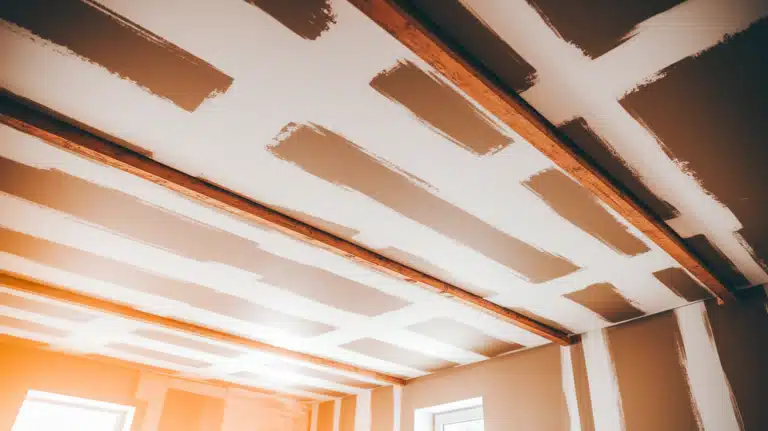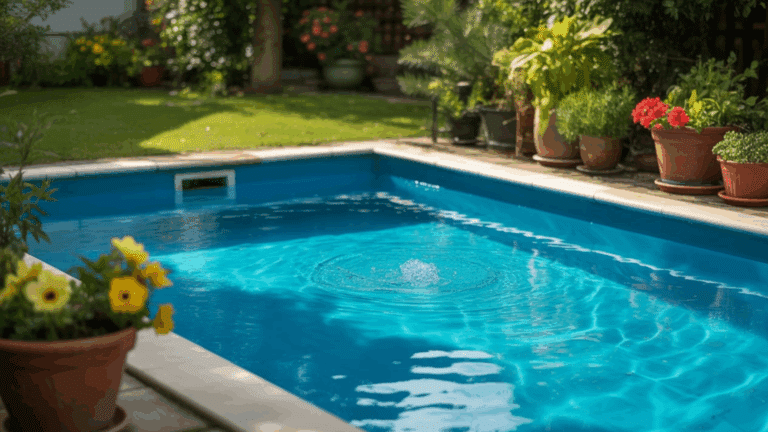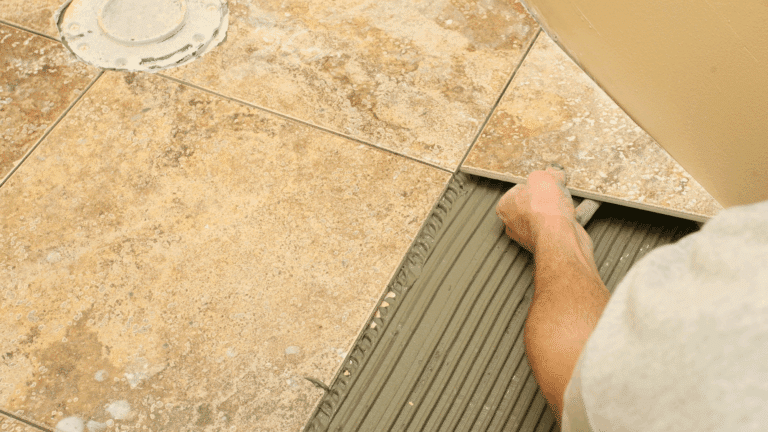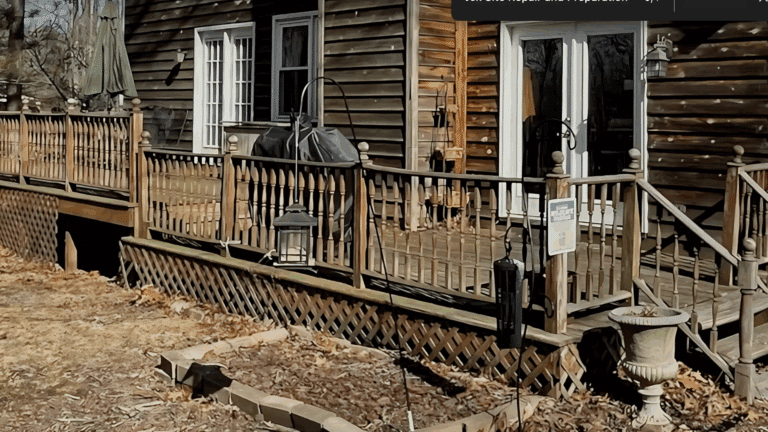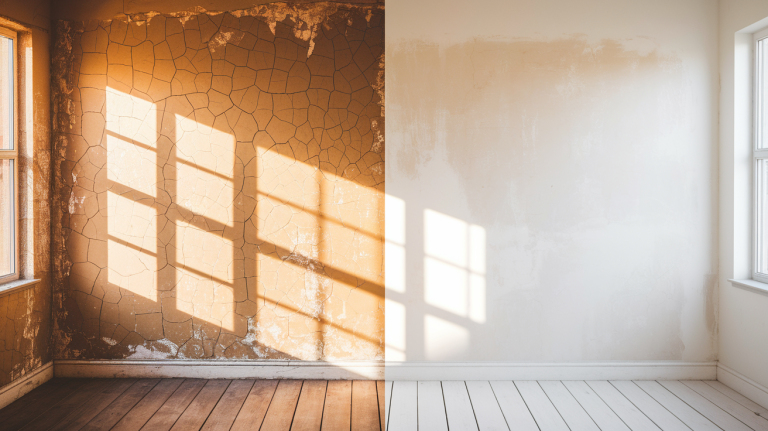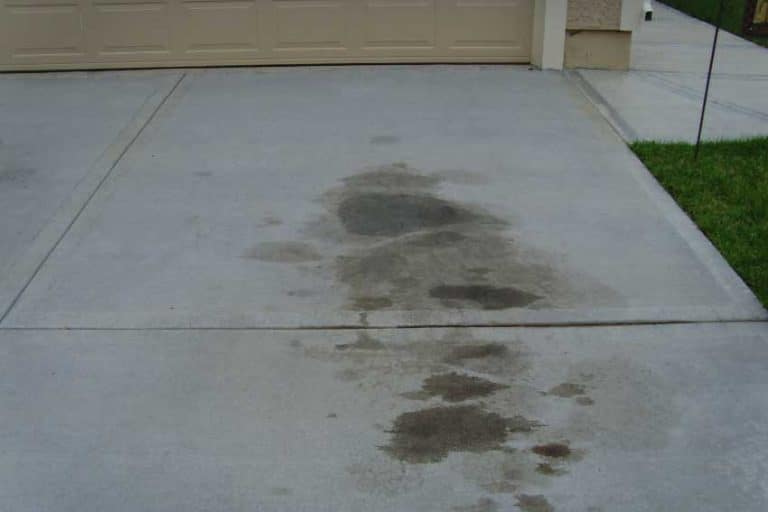Subfloor Mold? Here’s How to Handle It!
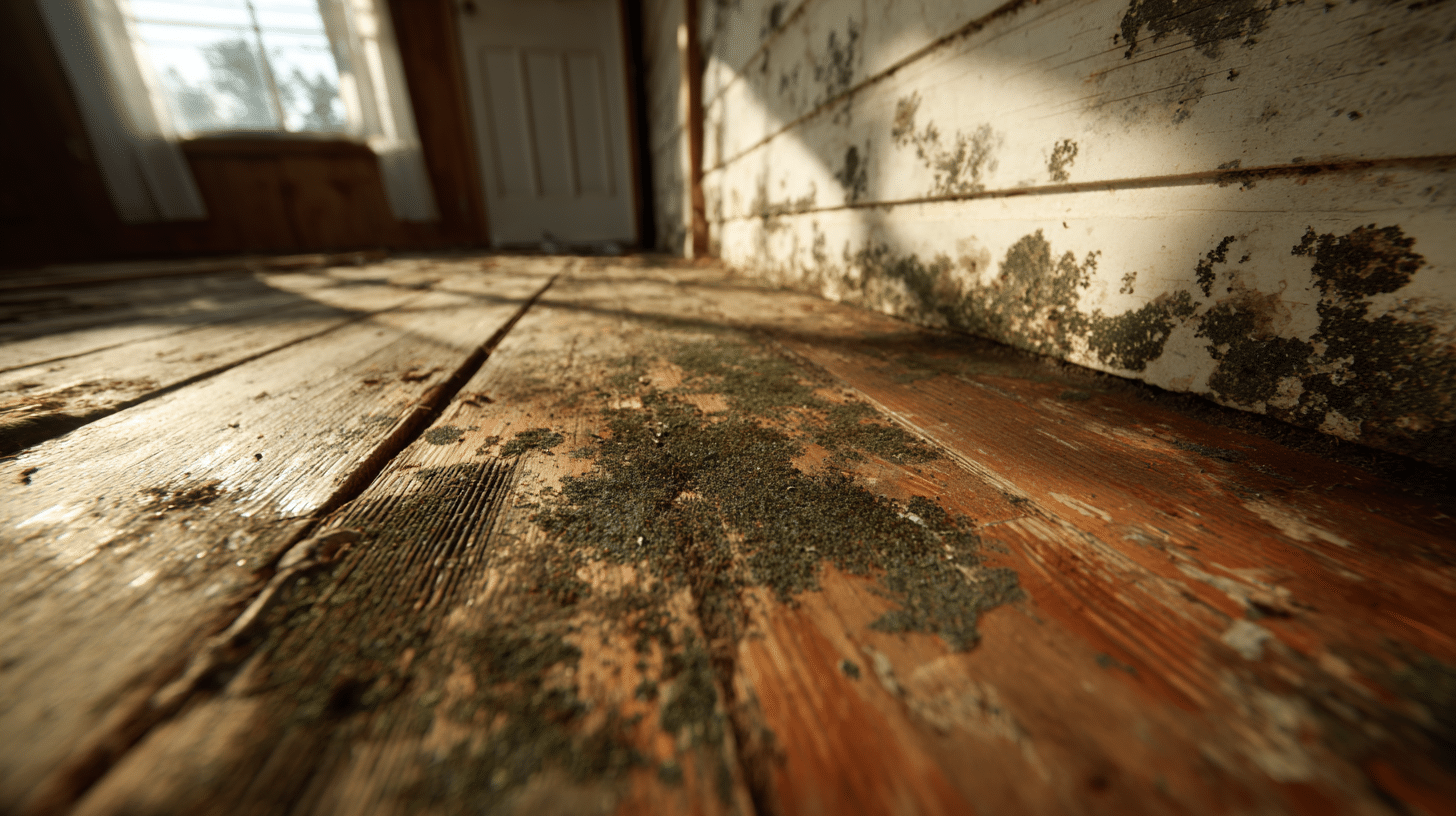
That musty smell or those dark spots you’ve noticed could mean mold is lurking beneath your floors, but don’t panic!
Start by checking for soft, spongy areas when you walk, and trust your sense of smell, as mold has a distinctive odor.
The solution is straightforward: carefully remove the affected flooring, clean the subfloor with an antimicrobial solution, and ensure everything’s completely dry before replacing materials.
Most importantly, tackle any leaks immediately and improve ventilation to prevent future growth.
With these simple steps, you’ll eliminate the problem and protect your home from future mold invasions!
Common Signs of Subfloor Mold
Spotting subfloor mold early can save you from bigger problems down the road. Keep an eye out for visible discoloration like black, green, white, or fuzzy patches beneath your flooring.
You might also notice your floors starting to warp, develop soft spots, or swell in certain areas. One of the biggest red flags is a persistent musty or earthy smell that just won’t go away, even after cleaning.
Don’t ignore health symptoms either: if you or your family members start experiencing unexplained coughing, sneezing, or eye irritation, especially when you’re at home, it could be a sign that mold is lurking beneath your floors and affecting your indoor air quality.
Certain Causes of Mold on Subfloor
Understanding what causes mold on subfloors is the first step in prevention.
So, here are the main culprits behind this common household problem:
| CAUSE | HOW IT HAPPENS |
|---|---|
| Hidden Moisture | Plumbing leaks, spills, condensation, or flooding create wet conditions under your floors. |
| Trapped Water | Water gets stuck beneath non-porous floorings like vinyl, laminate, or tile, with no way to dry. |
| Poor Ventilation | Inadequate airflow or missing moisture barriers in crawl spaces allow humidity to build up. |
By knowing these common causes, you can take steps to keep moisture away from your subfloors and prevent mold from taking hold in the first place.
Materials & Tools Required for Removing Mold on Subfloor
Before you start removing mold, it is important to have the right tools, materials, and take safety precautions. Here is a list of what you’ll need to set yourself up properly:
Step-by-Step Process for Safe Mold Removal Made Simple
Here are the simple steps to safely remove mold from your subfloor. Mold removal might seem overwhelming, but with the right approach and safety gear, you can tackle this problem head-on.
Taking care of mold quickly is important for your family’s health and your home’s structural integrity.
Step 1: Find the Mold
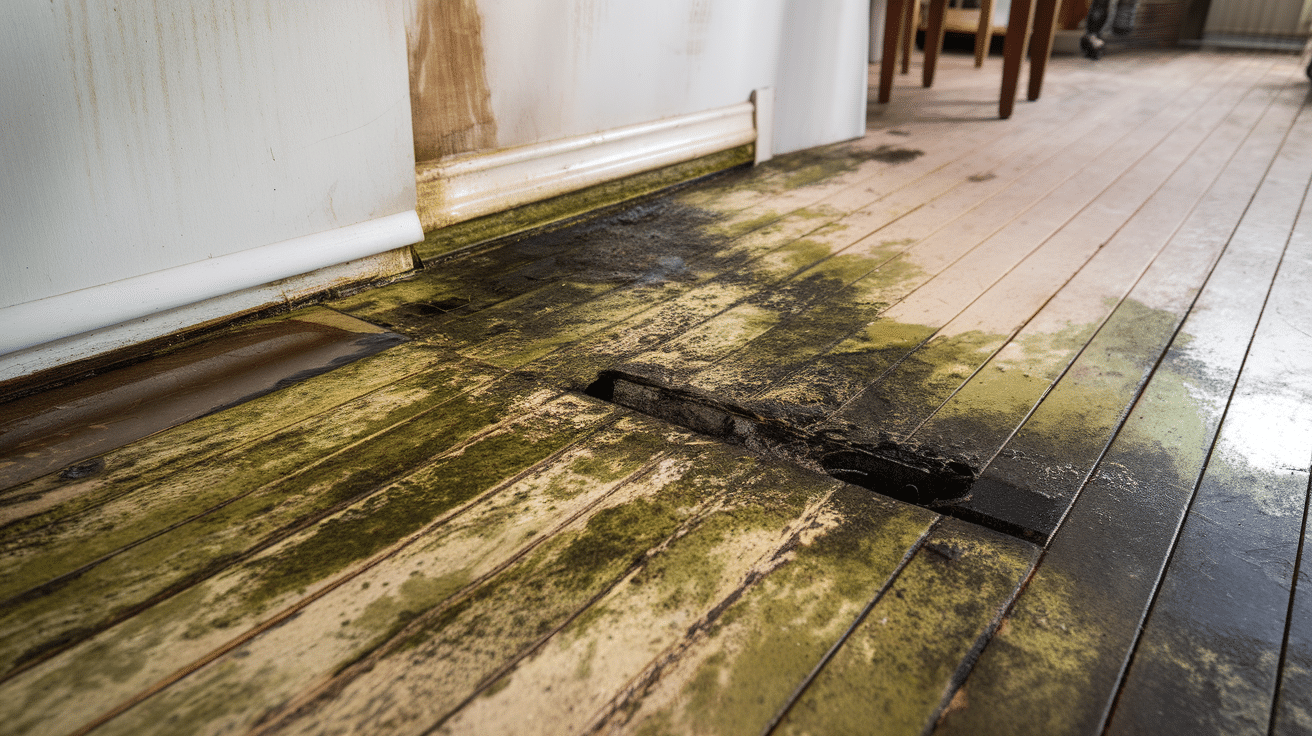
Start by carefully inspecting the area under your floor. Look for dark, fuzzy patches that could be mold.
These spots are usually a sign that moisture has been trapped, allowing mold to grow.
You might notice a musty smell, too, which is another sign of mold.
Check near leaks, wet areas, or places where moisture tends to gather, like basements or crawl spaces.
Mark the areas with mold so you know exactly where to focus your cleaning.
Step 2: Wear Protective Gear
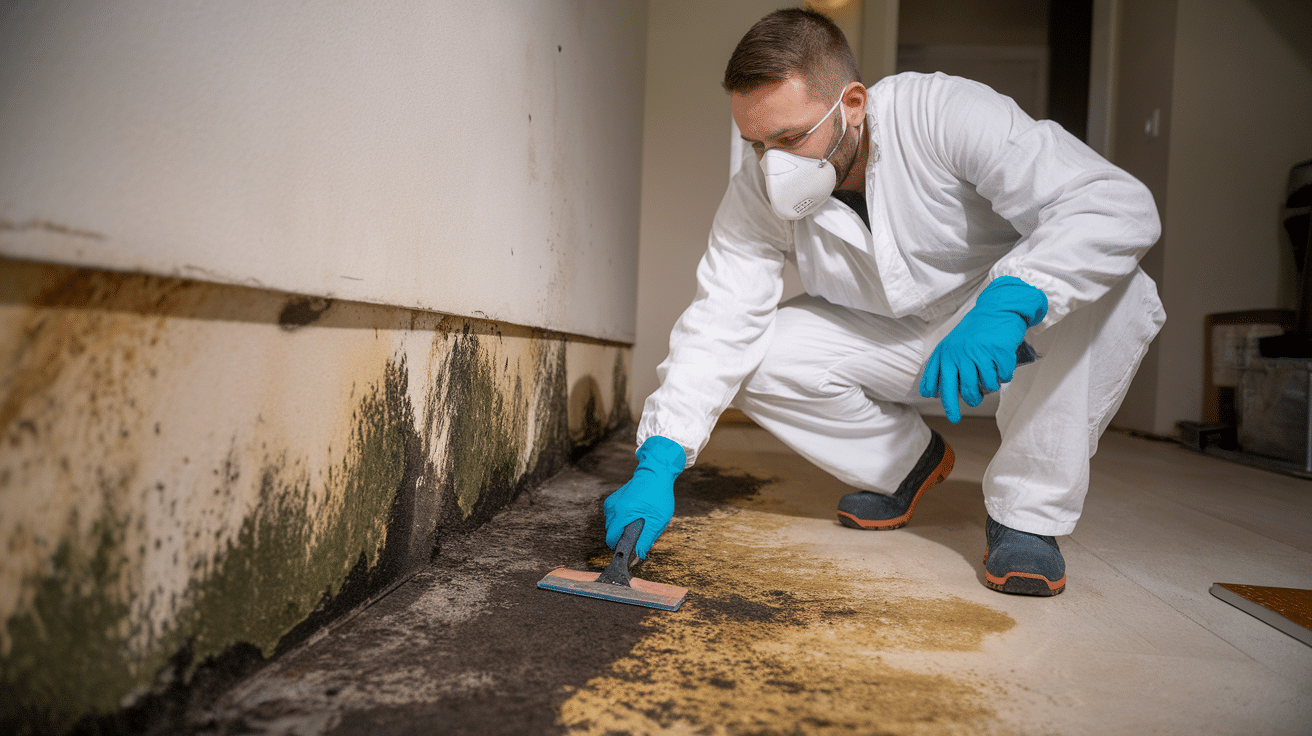
Once your supplies are ready, it is time to put on your protective gear. Mold can be harmful to breathe in, so wearing a mask is essential.
Gloves will protect your hands from touching the mold and cleaning chemicals, while goggles will keep your eyes safe.
Taking these precautions is important for your health, especially when dealing with mold in confined spaces.
Step 3: Spray the Mold with Cleaner
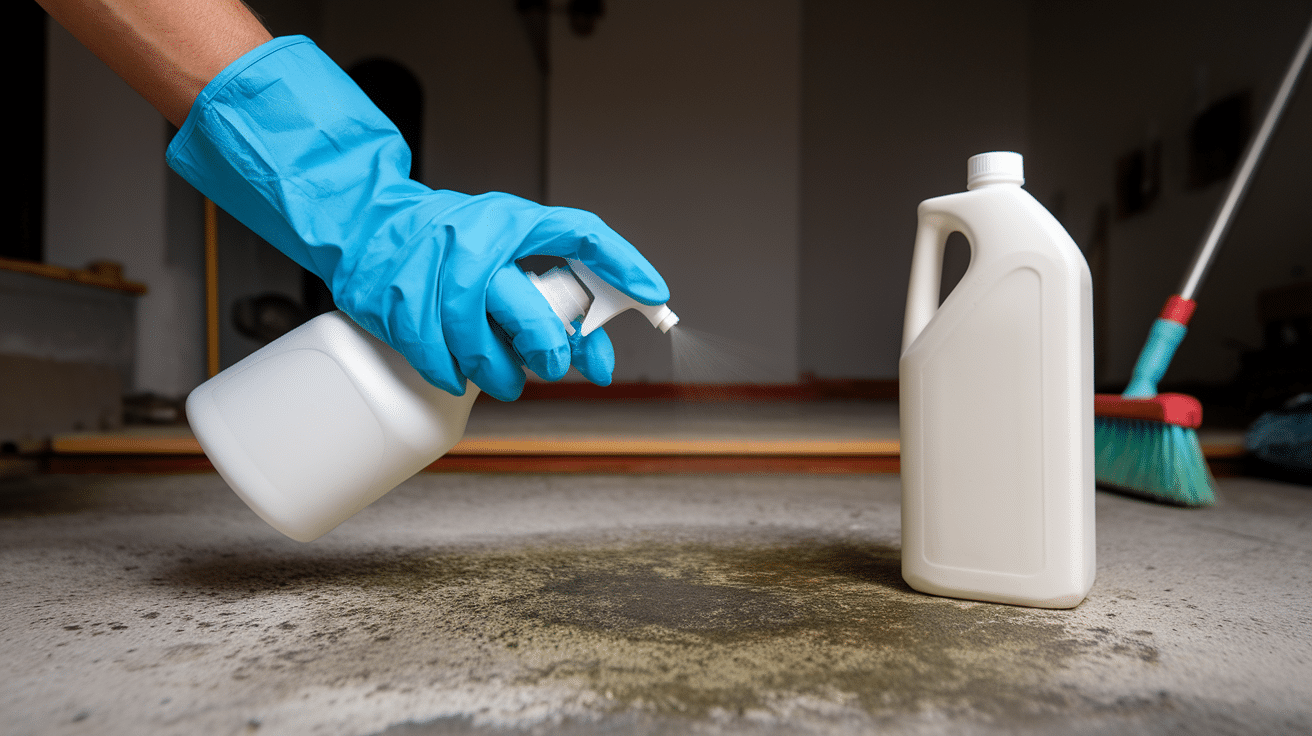
Now that you are protected, it is time to treat the mold. Spray the affected area with your mold cleaner or your homemade solution.
If you are using vinegar, spray it directly onto the mold and let it sit for about 10 minutes. Vinegar is a great natural mold killer.
If you choose bleach, mix it with water (one cup of bleach to a gallon of water), and spray it on the mold. Let it sit for at least 10-15 minutes to kill the mold effectively.
Step 4: Scrub the Mold Off
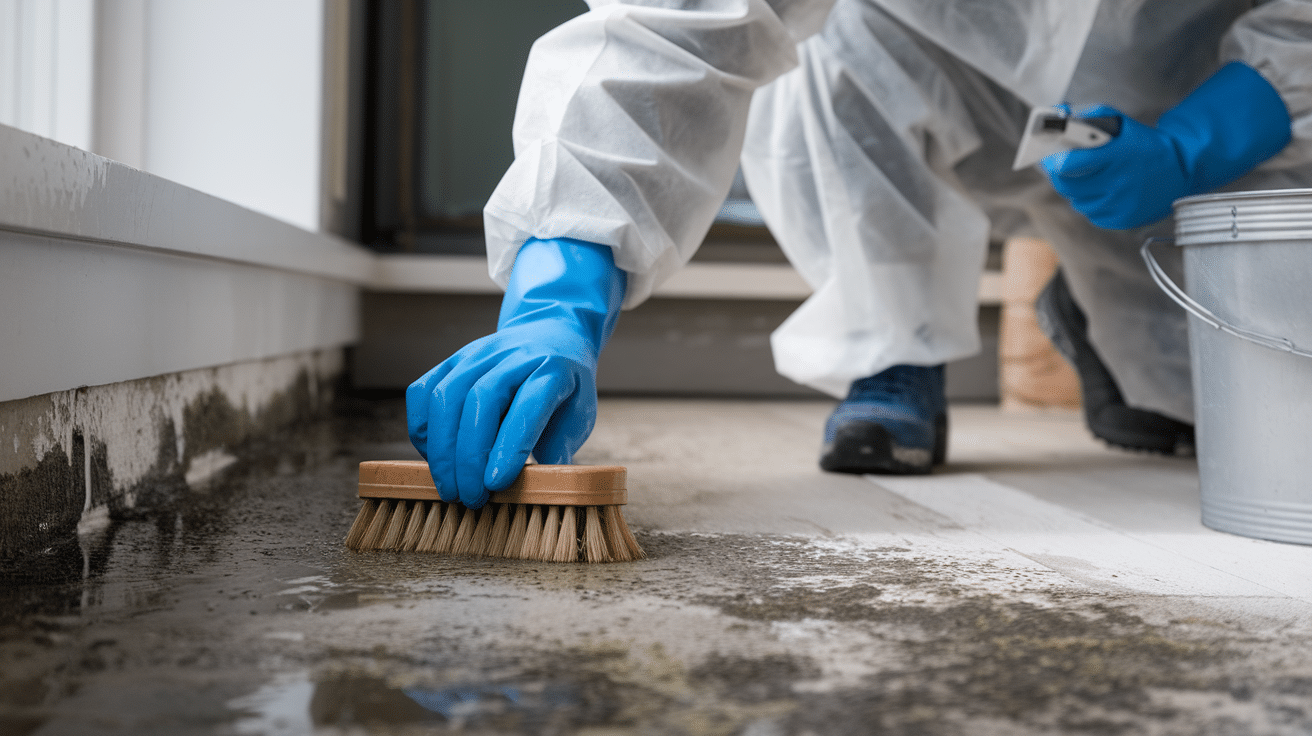
After letting the cleaner sit for a while, grab your scrub brush. Begin scrubbing the moldy spots gently in circular motions.
This will help loosen the mold from the subfloor.
Make sure you scrub all the affected areas, paying close attention to corners or areas that may have more buildup.
If the mold is stubborn, you might need to scrub for a little longer or reapply your cleaning solution.
Be thorough to ensure you remove all the mold.
Step 5: Dry the Area Completely
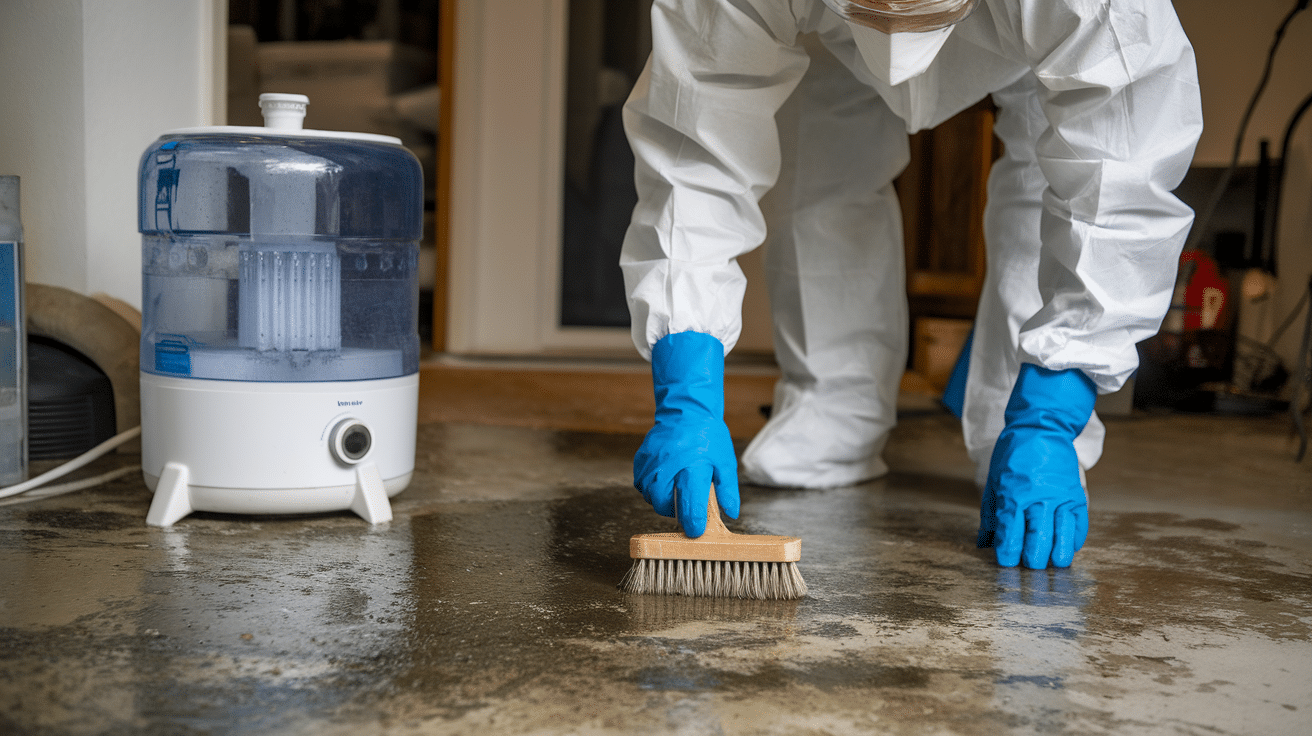
After scrubbing away the mold, the next important step is to dry the area completely.
Mold thrives in moist conditions, so leaving the subfloor wet can encourage it to return.
Use a fan to blow air over the damp area or place a dehumidifier in the room to draw out the moisture.
If you do not have a dehumidifier, leave the windows open and let fresh air circulate. The faster you can dry the area, the better.
Step 6: Check for Leftover Mold
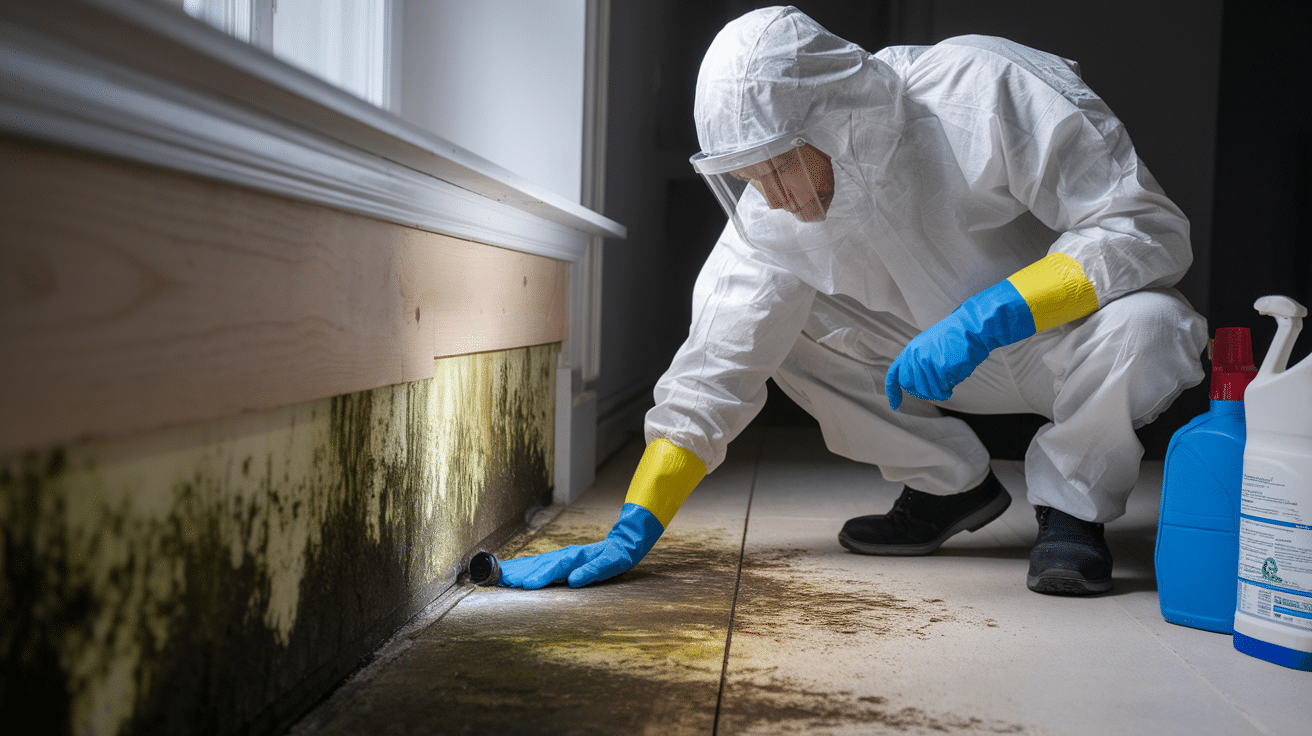
After the area has dried, take a close look to make sure you did not miss any mold.
Even small amounts of leftover mold can grow back quickly. If you find any, repeat the cleaning process.
It is better to double-check and clean again than to leave mold behind, which could lead to bigger problems later.
Step 7: Seal the Subfloor (Optional)
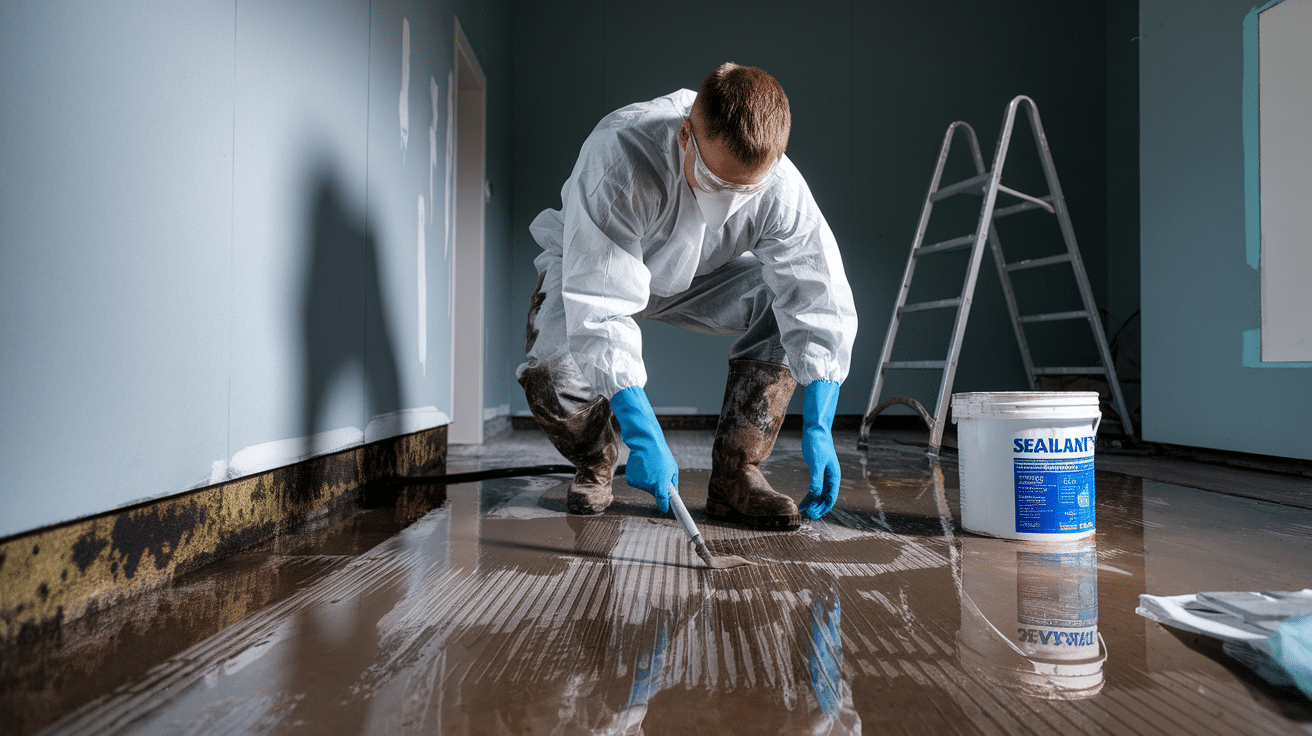
If you want to prevent mold from returning, consider applying a mold-resistant sealant to the subfloor.
This will help protect it from moisture in the future, making it harder for mold to grow.
It is an extra step that can save you time and trouble down the road, especially in areas that are prone to high humidity or moisture.
Final Check: Once you’ve removed the mold, do a thorough inspection to make sure no mold remains and the area is completely dry. Also, check the subfloor for any soft spots or damage that might need repair or replacement.
DIY vs Professional Remediation
Deciding between tackling mold removal yourself or calling in the pros?
Here’s what you need to know to make the right choice:
| APPROACH | BEST FOR | KEY CONSIDERATIONS |
|---|---|---|
| DIY Removal | Small areas (10 sq ft or less) with non-toxic mold | Must use proper safety gear and follow safety measures; budget-friendly option |
| Professional Remediation | Widespread mold, toxic varieties (like black mold), or damaged subfloors | Experts have specialized equipment and experience; more expensive but safer for serious cases |
Note: Remember, your safety comes first. When in doubt about the type or extent of mold you’re dealing with, it’s always better to get professional help rather than risk your health.
Prevention & Long-Term Protection
The best way to deal with subfloor mold is to stop it before it starts. Here are the key steps to protect your home long-term:
- Fix Moisture Sources: Repair leaks, improve drainage, and maintain plumbing to eliminate water problems.
- Boost Ventilation: Install proper airflow and moisture barriers in crawl spaces and basements.
- Control Humidity Levels: Keep indoor humidity below 50% using dehumidifiers when needed.
- Schedule Regular Inspections: Check for musty odors, moisture, warping, or dampness every few months.
- Act Fast on Problems: Address any water issues or suspicious signs immediately before they become bigger headaches.
Wrapping It Up
Dealing with mold on your subfloor doesn’t have to be scary when you know what to do.
By catching it early, using the right safety gear, and following proper removal steps, you can get your home back to being healthy and comfortable.
Remember, the key is staying on top of moisture problems and doing regular checks around your house.
Keep those humidity levels down, fix leaks quickly, and don’t ignore musty smells or weird spots on your floors.
Your subfloor is now clean and protected, but do not stop there!
Make prevention your best friend, and you will never have to worry about this problem again.
Ready to enjoy your fresh, mold-free home?
Frequently Asked Questions
What Should I Do if I Find Mold in My Crawl Space?
If mold is in your crawl space, it is important to fix any water leaks or ventilation issues first.
Then, follow the steps to clean it. You might also want to use a dehumidifier or vapor barrier to keep the area dry in the future.
How Do I Know if The Mold is Harmful to My Health?
If you are having trouble breathing, noticing allergies, or feeling sick when you are near the moldy area, it might be time to get it checked. Mold can sometimes affect your health, especially if you have respiratory issues or allergies.
How Often Should I Check for Mold on My Subfloor?
It is a good idea to check for mold every few months, especially in areas that are damp or prone to moisture, like basements. Regular checks can help you catch mold early before it becomes a bigger problem.

